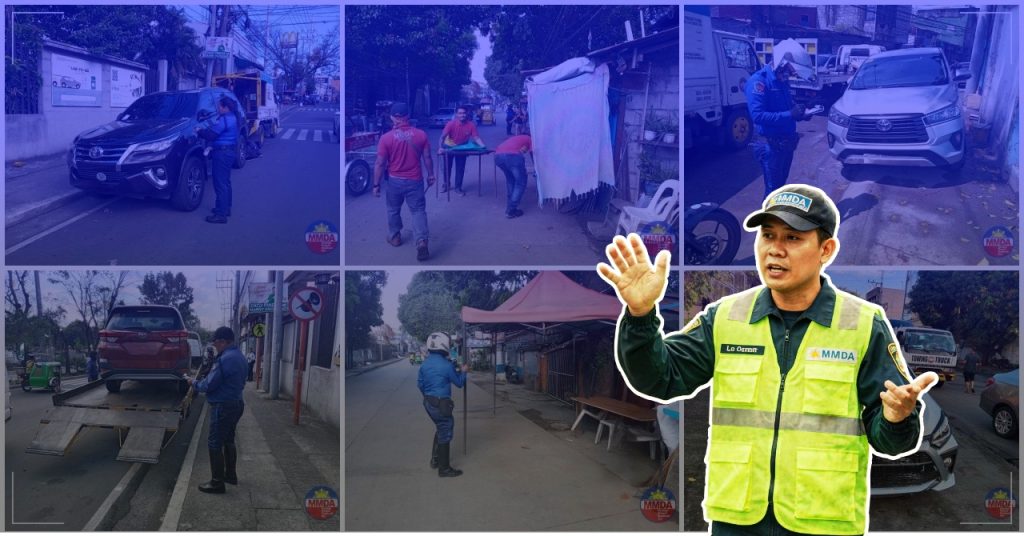The Metropolitan Manila Development Authority (MMDA) is responsible for regulating road use to maintain smooth traffic flow and public safety.
One of its key responsibilities is enforcing rules on road obstructions, which include illegally parked vehicles, sidewalk encroachments, and other forms of blockage that hinder pedestrian or vehicular movement.
These rules apply to all road users, whether you’re a motorist, pedestrian, or business owner with property extending onto public roads.
Violations can result in fines, towing, or legal action, depending on the severity of the obstruction.
Understanding these rules can help you avoid penalties and contribute to a safer, more organized road system.

What Constitutes a Road Obstruction?
MMDA defines road obstructions as any object or action that blocks or restricts the free passage of vehicles and pedestrians.
Common Examples of Road Obstructions:
- Illegally parked vehicles (whether attended or unattended)
- Construction materials left on sidewalks or streets
- Sidewalk vendors and makeshift stalls encroaching on pedestrian lanes
- Uncollected garbage blocking roads
- Double parking that narrows lanes
- Public utility vehicles (PUVs) picking up or unloading passengers in non-designated areas
These obstructions create bottlenecks, increase congestion, and pose safety hazards, which is why MMDA actively enforces rules against them.
Illegal Parking: Rules and Penalties
Illegal parking is one of the most common road obstructions.
MMDA classifies violations into two categories:
1. Attended Illegal Parking
- This refers to vehicles parked illegally with the driver present.
- Penalty: ₱1,000 fine
2. Unattended Illegal Parking
- This applies to vehicles left parked in prohibited zones without the driver present.
- Penalty: ₱2,000 fine
Vehicles violating parking rules are subject to towing if they cause major obstruction.
MMDA has designated towing zones where illegally parked vehicles are immediately impounded.
Obstruction Violation and Its Consequences
Blocking public roads or sidewalks can lead to fines and additional enforcement measures.
Obstruction Penalty:
- Fine: ₱1,000
- Enforcement: MMDA officers may issue tickets or require immediate removal of the obstruction.
- Possible Towing: Vehicles that create significant road congestion may be towed to the MMDA impound area.
Legal Basis for MMDA’s Authority
The enforcement of road obstruction rules is backed by several laws and regulations:
- Republic Act No. 4136 – Land Transportation and Traffic Code, which establishes traffic rules, including illegal parking violations.
- Republic Act No. 7924 – The law that created the MMDA and granted it authority over traffic management.
- MMDA Resolution No. 18-008 (2018) – Specifies penalties for illegal parking and obstruction violations.
These legal frameworks empower MMDA to enforce fines and towing policies in Metro Manila.
Towing and Vehicle Impoundment
Illegally parked or obstructing vehicles can be towed, depending on the severity of the violation.
What Happens When Your Car is Towed?
- The vehicle is brought to an impounding area.
- The owner must pay towing and impound fees before claiming it.
- Failure to claim the vehicle within a specified period may result in auctioning.
Towing Fees:
- Light vehicles: ₱1,500
- Medium vehicles: ₱2,500
- Heavy vehicles: ₱4,500
Additional storage fees apply per day beyond the initial holding period.
Who Is Affected by These Rules?
The MMDA’s road obstruction rules impact a wide range of individuals:
- Motorists who park illegally or block roads.
- Business owners who extend their establishments onto sidewalks.
- Public transport operators who pick up passengers in non-designated areas.
- Homeowners who place barriers in front of their driveways.
- Local government units (LGUs) responsible for enforcing regulations within their jurisdictions.
Awareness of these rules helps prevent violations and promotes road discipline.
How to Avoid Violations
Following MMDA’s road use policies can help you steer clear of fines and penalties.
Best Practices to Prevent Road Obstruction Violations:
- Park only in designated areas to avoid illegal parking fines.
- Keep sidewalks and roads clear of business stalls, construction materials, and personal property.
- Follow MMDA’s traffic regulations to ensure smooth vehicular and pedestrian flow.
- Report road obstructions to authorities to help keep public spaces accessible.
Practicing responsible road use benefits everyone and minimizes traffic disruptions.
Enforcement
MMDA implements strict enforcement strategies, including:
- Physical apprehension by traffic enforcers.
- Coordination with local government units (LGUs) to ensure compliance.
These measures enhance road safety and help regulate road space use more efficiently.
Recent Updates
MMDA Clearing Operations
Roads are not an extension of homes or garages. Today, the MMDA Special Operations Group conducted clearing operations on major roads in Metro Manila. They removed obstructions such as tents, appliances, abandoned vehicles, and illegally parked cars. The goal is to keep the roads clear, orderly, and disciplined. Each operation aims to ease traffic flow and maintain road safety.
Frequently Asked Questions
1. Can I contest a road obstruction violation?
Yes. If you believe a violation was issued unfairly, you may contest it by filing an appeal with MMDA’s Traffic Adjudication Division.
2. What should I do if my car is towed?
Check the MMDA impoundment area where your vehicle was taken, pay the necessary fines and towing fees, and claim your vehicle within the required period.
3. Do MMDA enforcers need to show identification?
Yes. MMDA enforcers must present a valid ID and issue an official citation ticket for any violation.
4. Are road obstruction penalties the same for businesses and individuals?
Yes. Both individuals and business establishments face the same fines for road obstruction violations, depending on the offense.
Conclusion
MMDA’s rules on road obstructions are in place to reduce congestion, enhance safety, and improve urban mobility.
Understanding and complying with these regulations helps maintain order and ensures fair road use for everyone.
By being mindful of where we park, how we use public roads, and respecting designated spaces, we contribute to a more efficient traffic system.